Breaking Down Menswear Mobile Marketing Examples
We live in a time where it’s easier than ever for menswear brands to reach out and say hello to new and returning customers. However since mobile marketing teams are all competing with each other for the attention of the customer, it’s easy to have a message get lost in the noise.
Today we take a look at how a few major menswear brands use display messages, push notifications, behavioral email and in-app marketing to achieve success.
Frank & Oak
Menswear designer and retailer Frank and Oak’s marketing game is on point.
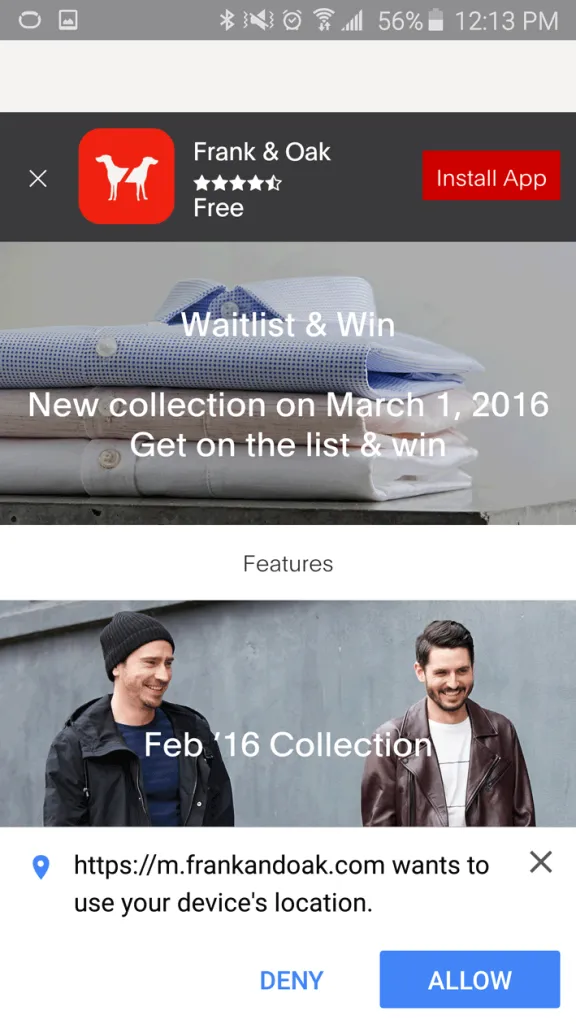
As soon as a mobile shopper hits their page, Frank & Oak detects the platform being used and surfaces the app for Android or iOS. This pop up tells the shopper that the app is free and shows the current star rating.
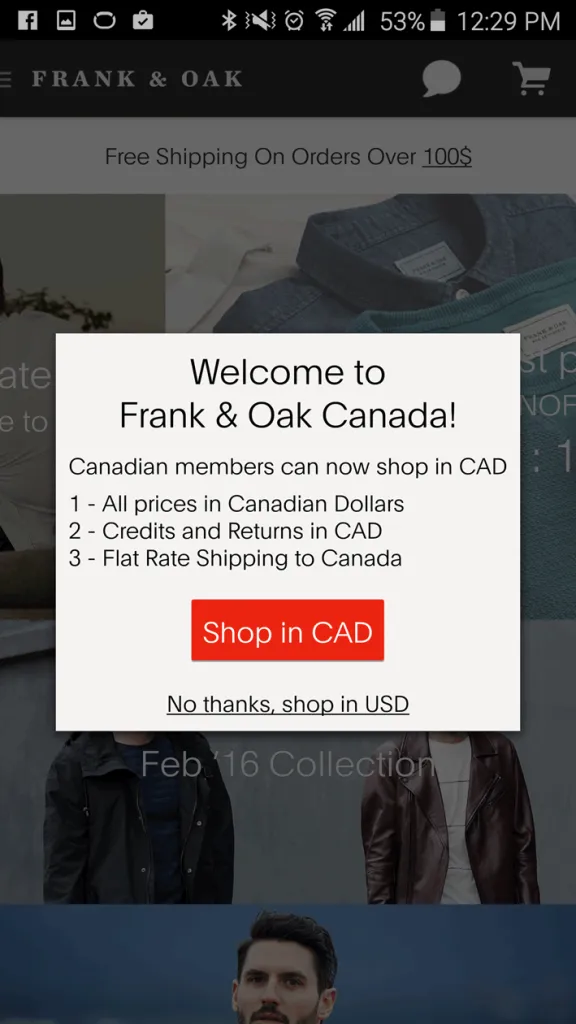
On initially opening the app, a pop up appears detailing how the Frank & Oak experience works for Canadian shoppers. As a new customer, I now know how my dollar, shipping, and returns work with the store.
Shortly after dropping a few items into the in-app shopping cart, Frank & Oak sent me four emails, each with a different call to action:
You Left Some Great Style in Your Cart -
A reminder that I forgot items in my shopping cart and a repeated 15% off promo code for my first purchase.
Elevate Your Shopping Experience -
Details on the Frank & Oak premium shopping rewards program
Welcome to Frank & Oak -
Includes a 15% off promo code for my first purchase

February is the best, here's why… -
Details on February styles and offers
Twenty-four hours later, Frank & Oak began sending daily push notifications via the app. Each notification gave a different and compelling reason to return to the app: “Last day for the Feb collection”, “Come see what’s new in March”, “Shoes we think would be right for you”, etc…
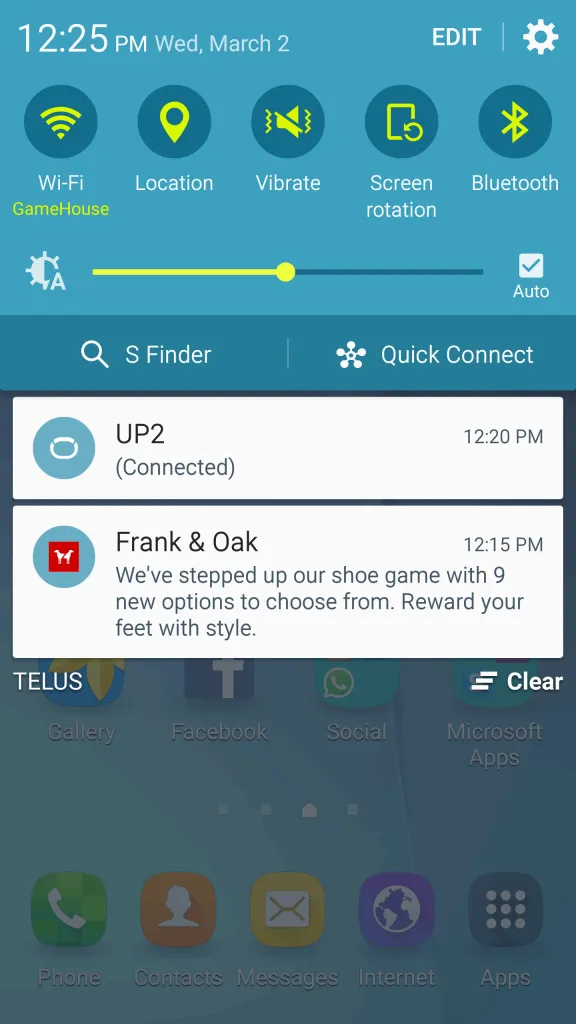
Between these messages and the follow up emails, it’s apparent that Frank & Oak really, REALLY want to sell me a knitted twill t-shirt.
Shoes.com
Shoes.com has their mobile site identical to the look and feel of their mobile app.

A mobile visitor to the online footwear seller Shoes.com will automatically be redirected to the store page servicing the shopper’s point of origin.

Here in the redirect to the Canadian store, Shoes.com becomes Shoeme.ca and uses humour to remind the shopper of the company’s Canadian roots. We also learn about free shipping, free exchanges & returns, and that there are no cross border fees involved. This experience is mirrored in the app.
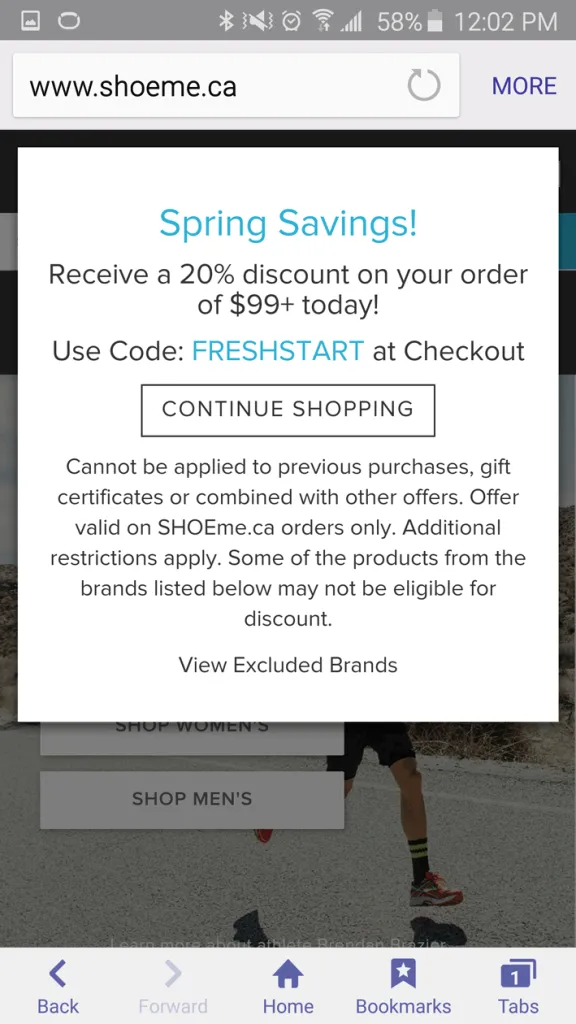
As soon as we close the redirect pop up, a second message appears. The shoppers is given a seasonal savings promo code along with some caveats around excluded brands. An opportunity was perhaps missed here to include the same tone as the previous message. Again, this happens in the app.
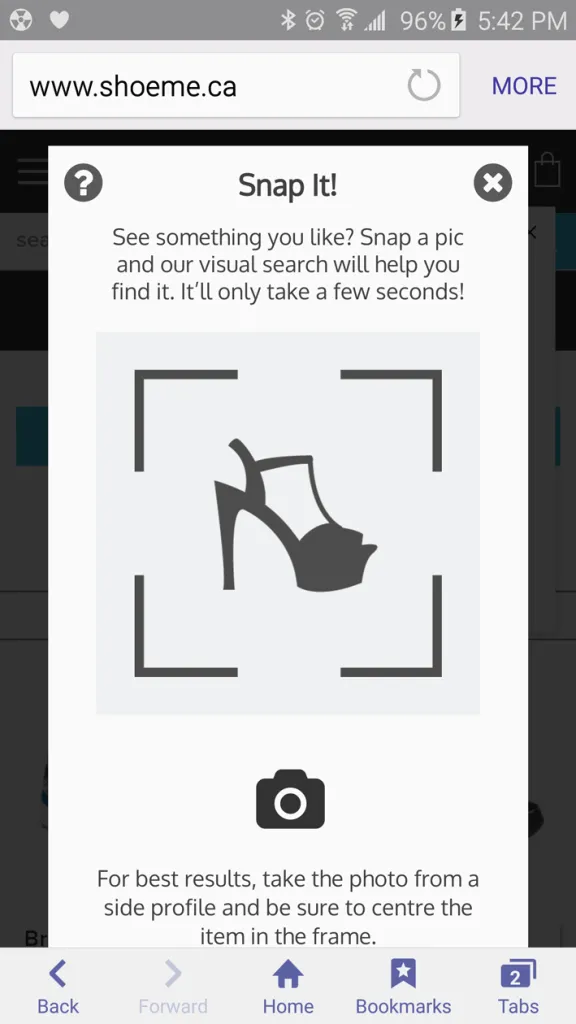
The shopping experience from here is very similar to that of other fashion online outlets with one exception. A curious shopper could tap on the camera icon at the top of the screen, however in my twenty minute shopping experience, this feature wasn’t called to my attention until I tapped on it accidentally. Asides, from this one oversight, Shoes.com has done an excellent job of their mobile web and app experience.
Trendy Butler
Most people discover Trendy Butler through their viral video campaign featuring a foul-mouthed butler explaining the service. Take a minute and watch it for a better idea of what Trendy Butler is all about. It’s definitely good for a laugh. Use headphones if you’re at the office.
Unlike many fashion retailers,Trendy Butler sells one thing: $150 worth of fashionable clothing delivered to your door for $65 (continental US only, international shipping is extra). This monthly menswear service combines the idea of a boutique stylist with a subscription service.
Keeping in line with their stylist-at-your-service appearance, a message button floats to the side on every page of their mobile site like a well-trained servant. Tapping this button starts a conversation, or leaves a message if one is not available, with a Trendy Butler stylist.
Trendy Butler surfaces their subscription offer and starter steps at every opportunity. Their main selling points highlight value and ease. The simple scrolling site uses simple messaging, inspirational quotes like “Looking good has never been so easy,” and fashion images to sell the idea of their products.
This style of simple messaging follows into the “Get Started” section of the Trendy Butler site. After six steps involving simple style choices and basic measurements, a new customer is ready to sign up. Creating an account can literally only take sixty seconds. Very cool.
Zara
Spanish clothing and accessories retailer Zara is all about projecting image. It shows in their retail space, their website, and their app.

When a user opens the Zara app for the first time, they are prompted to allow push notifications. What I really like here is that I’m given reasons to sign up. As an avid app user, my phone is constantly buzzing from notifications and it’s a nice change to know what kind of messaging to expect from a newly downloaded app.

Past this point, Zara seems to have chosen not to engage the shopper with much in the way of messaging. An invitation to view new designs is always the first option seen on future visits and subtle reminders about free shipping options are sprinkled throughout.
The app shares the same look and branding as Zara’s website, giving a smooth transition between experiences. Copy is minimal throughout both the app and the website, and the clean design allows the products to shine.
Indochino
Online custom suit retailer Indochino offers quality menswear and an excellent mobile shopping experience. Check out a few of the simple and clever things Indochino has done.
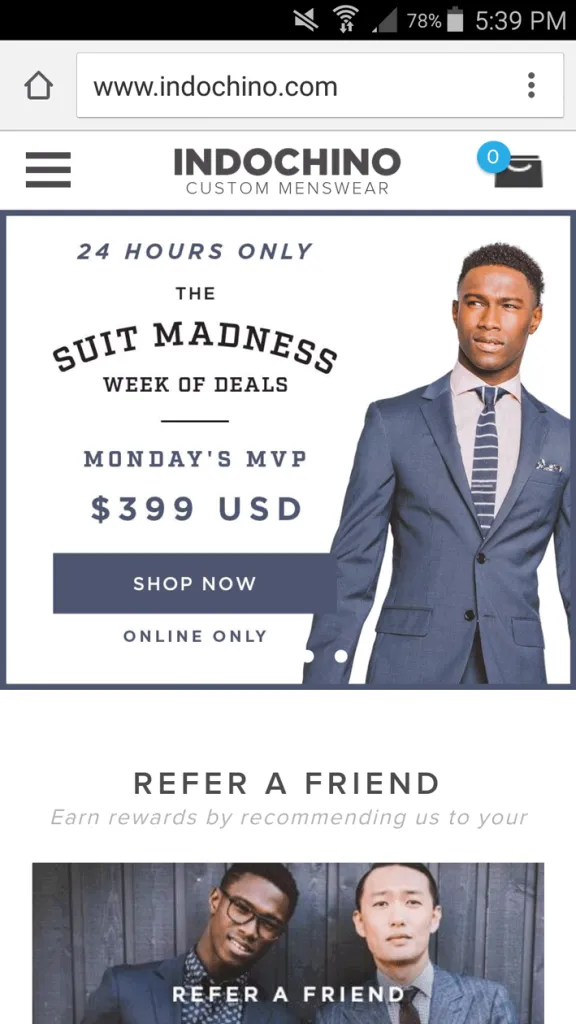
The first thing a mobile customer will notice during when visiting Indochino’s site is the rotating carousel displaying monthly offers and flash sales. Each of these images falls in line with the rest of the site’s branding and contains easy-to-read direct messages about each of the offers.
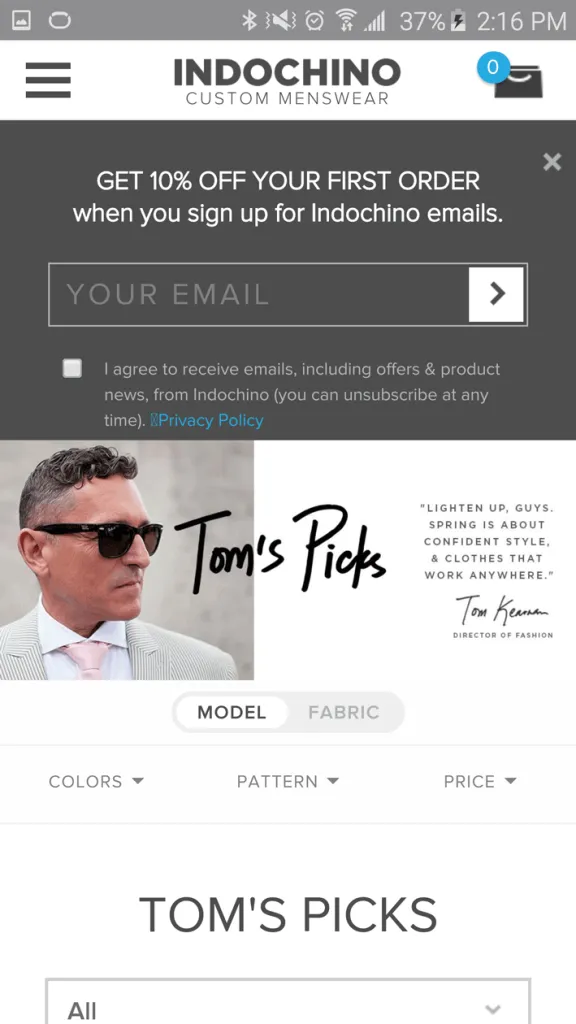
As the shopper explores, a pop up appears offering a discount for signing up to the Indochino newsletter. This pop up feels non-intrusive, matches the design of the rest of the site, and it’s apparent how to close it. The shopper can also continue navigating the page while the pop up is active.

Word of mouth remains one of the most powerful tools for marketing a product. Towards the bottom of the screen a viewer can see the words “refer a friend.” Scrolling down, we discover by doing so the shopper can earn a discount by sending a bonus to a friend. The pop up to do so is about as simple as it gets. the shopper fills in their email, adds their friend’s address, and can customize the message that is about to be sent. Easy, fast, smart.
Key Takeaways:
Be brief. Mobile devices and notifications have very limited space for your message. Hone your message subject down to its core.
Target the message. The more unique and direct the notification, the more likely the customer is to follow it through to your app or site.
Teach. Does your site or app have a unique feature to offer? Surface it early during the shopper’s experience with your site.
Be patient. Give the shopper a chance to see what you have to offer before asking them to sign up. Flooding their inbox right off the bat is a sure way to get an unsubscribe.
Send reminders! The customer was on your site or app for a reason. Even better, automated targeted messaging based off site history gives the impression of a personalized experience.
Motivate sign ups. Lay out the benefits of signing up for your notifications and newsletters. A little bonus goes a long way.
Be regional. International shoppers want what you’re selling. Let the rest of the world know what you can do and how you can get your product to them.

